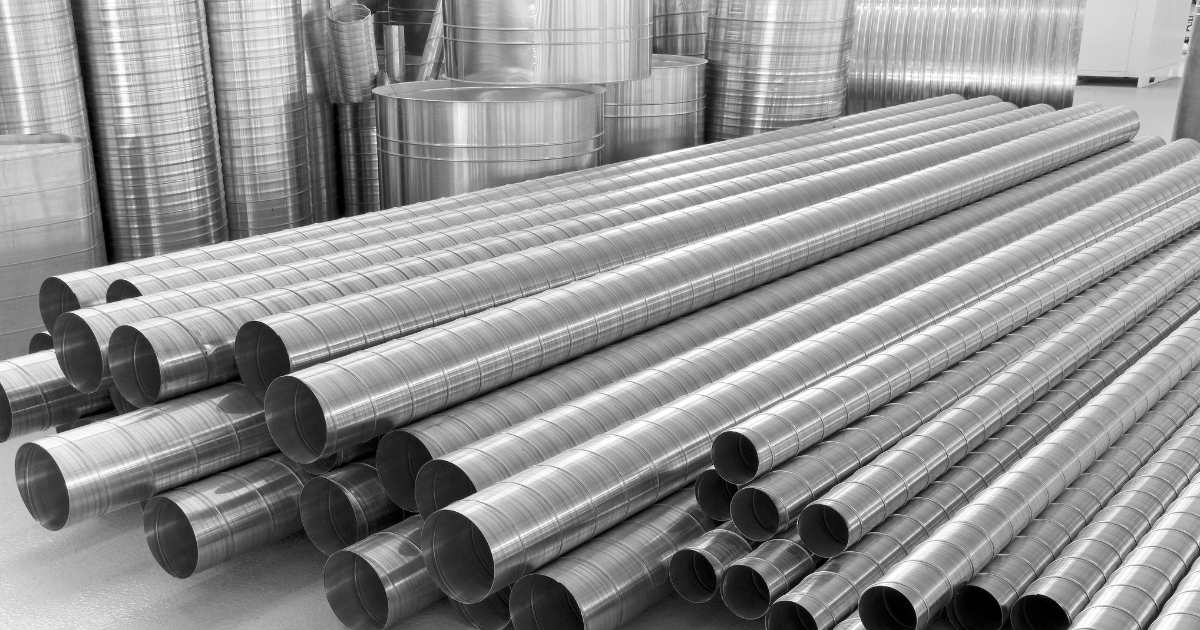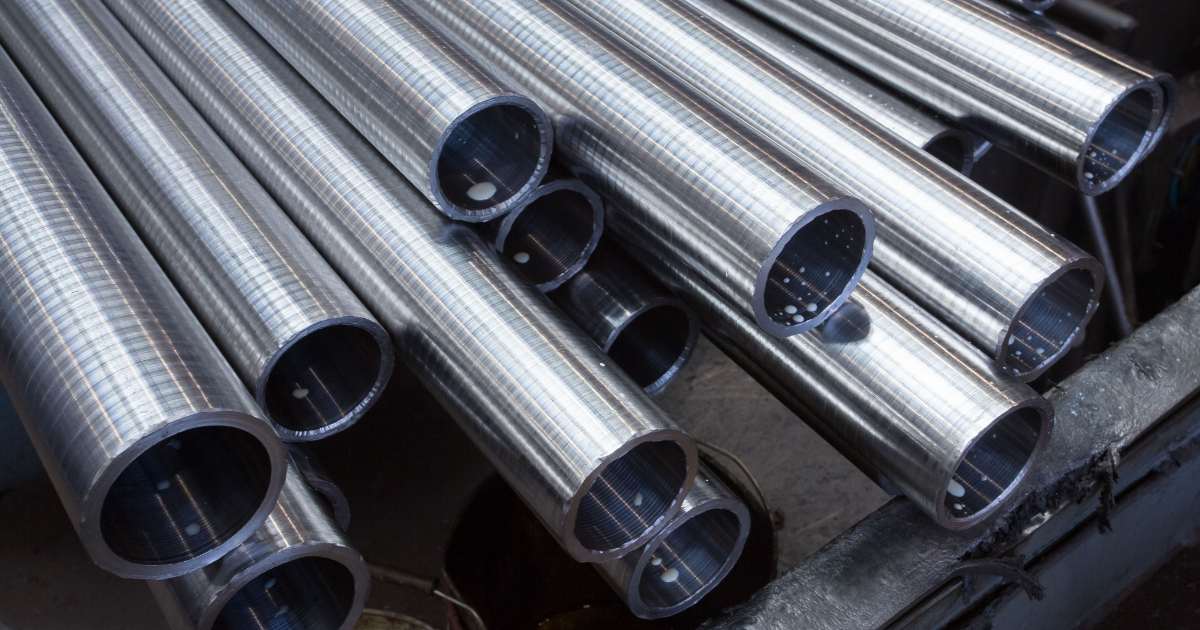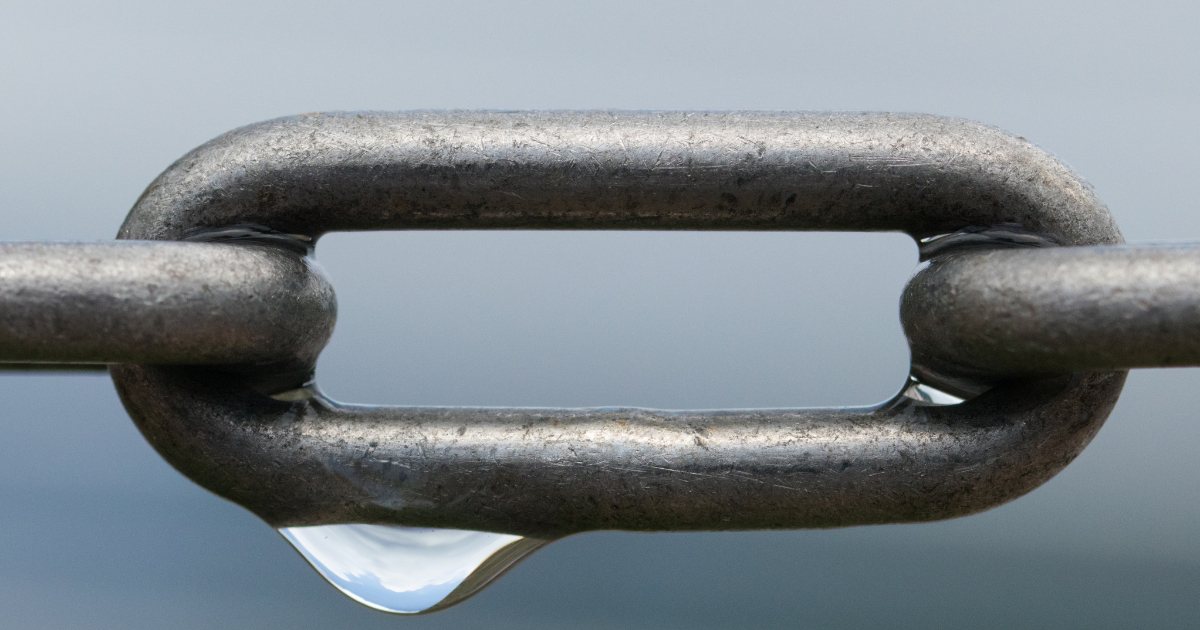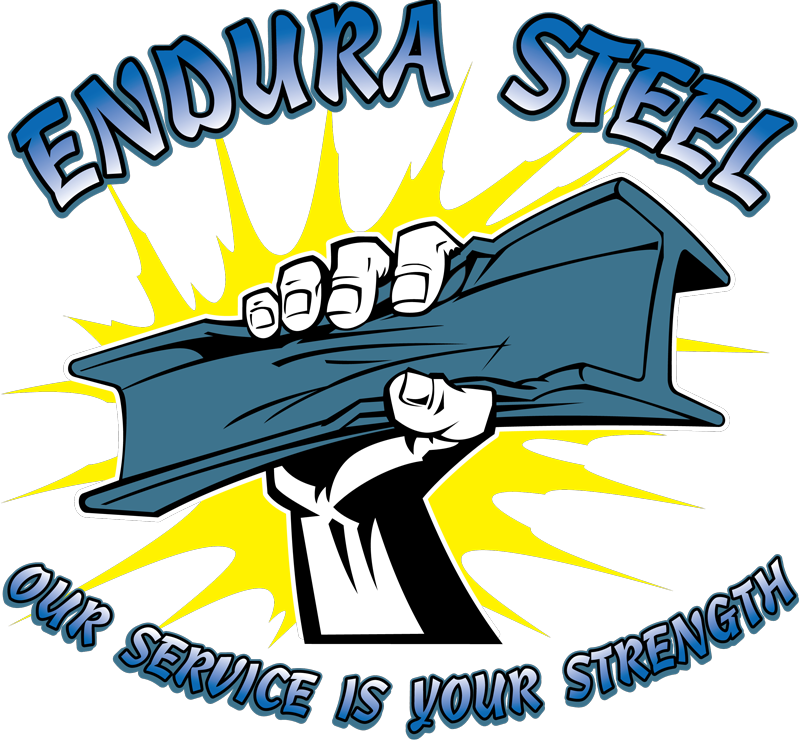Strength is a feature of materials. Whether building a towering skyscraper or manufacturing a high-performance automobile, the strength of the chosen material plays a role in determining the integrity and reliability of the end product. When it comes to strength, steel stands out as an exceptional material. But what makes steel strong? Let’s explore the factors that contribute to steel’s robustness.
What Makes Steel Strong?

Composition and Microstructure
Steel primarily comprises iron and carbon, complemented by trace amounts of additional alloying elements. The carbon content within the steel is a factor in determining its strength and durability. By carefully controlling the carbon levels during the manufacturing process, engineers and metallurgists can achieve a balance between power and malleability. Steel’s versatility is expanded through the introduction of various alloying elements.
- Iron and Carbon Content
The iron-carbon phase diagram serves as a tool for understanding the relationship between carbon content and the microstructure of steel. The microstructure predominantly consists of ferrite at lower carbon levels, typically around 0.022%. This phase exhibits a soft and ductile nature, making it ideal for applications that require high formability and flexibility. The microstructure transforms, and pearlite starts to form. The presence of pearlite imparts increased hardness and strength to the steel, rendering it suitable for applications that demand superior structural integrity and wear and tear resistance. As steel manufacturers and engineers grasp the nuances of this phase diagram, they can finely tune the carbon content to achieve specific mechanical properties.
- Alloying Elements
Manganese is added to improve the steel’s strength and toughness. Chromium is an element in stainless steel, contributing to its corrosion resistance by forming a protective oxide layer. Nickel increases the steel’s ductility. Molybdenum enhances the steel’s high-temperature strength and improves its pitting and crevice corrosion resistance. Other alloying elements like vanadium, tungsten, and silicon may also be incorporated to impart specific properties like wear resistance, elevated temperature strength, and electrical conductivity. Steel manufacturers can precisely engineer steel with a broad spectrum of characteristics to meet the demands of various industries.
Crystal Structure
Steel’s strength is deeply influenced by its crystal structure, which adopts a body-centered cubic (BCC) lattice arrangement. Within this lattice, atoms are positioned at the corners and center of each cube, creating a robust and closely packed structure. This arrangement allows steel to effectively distribute external forces and resist deformation. The BCC lattice also offers opportunities for strengthening through alloying and controlling grain size. Materials scientists can continuously advance steel engineering to meet the ever-evolving demands of modern technology and infrastructure.
Dislocation Theory
The strength of steel can also be attributed to the dislocation theory, which involves defects or irregularities in the material’s crystal lattice structure. When an external force is applied to the steel, these dislocations act as obstacles to the movement of other dislocations, hindering their motion and impeding plastic deformation. Engineers and metallurgists can further manipulate the dislocation density and distribution through various processing techniques to optimize the steel’s strength.
The Role of Carbon in Steel’s Strength

Carbon is a steel component, and its presence impacts the material’s strength and hardness. When carbon atoms are incorporated into the iron lattice of steel, they form a solid solution, introducing lattice distortion and creating a stronger and harder material. The control of carbon content in steel allows manufacturers to tailor the material’s properties for specific purposes. Low-carbon steels are prized for their formability and weldability. Medium to high-carbon steels find use in applications requiring greater hardness and strength.
Effect of Carbon Content
The carbon content in steel is a factor that determines its strength and hardness. Higher carbon levels lead to the formation of stronger and harder steel. However, avoid excessive carbon content as it can render the steel brittle. Striking the right balance of carbon content can ensure that the steel retains strength and ductility.
Formation of Hardened Martensite
When steel with high carbon content undergoes rapid cooling, it undergoes a phase transformation and transitions known as martensite. This trapped carbon creates a highly stressed and lattice-distorted structure. Martensite possesses inherent brittleness. The quenched martensitic steel is often subjected to a tempering process. The steel is heated to a temperature point and then slowly cooled. Combining quenching and tempering is a widely utilized heat treatment method that allows engineers to optimize the steel’s mechanical properties.
Alloying Elements and Strengthening Mechanisms

Alloying elements play a role in the properties of steel. One of the strengthening mechanisms achieved through alloying is solid solution strengthening. The alloying elements are dissolved into the steel matrix and create lattice distortions that hinder the movement of dislocations. Alloying elements can promote the formation of unique microstructures, leading to improved mechanical properties. The careful selection and precise control of alloying elements allow engineers to tailor steel compositions to meet the diverse demands of various industries.
Solid Solution Strengthening
When elements dissolve into the iron matrix, they introduce lattice distortions that obstruct the movement of dislocations, effectively increasing the material’s strength. This strengthening mechanism allows engineers to customize steel’s mechanical properties to suit diverse industry applications.
Precipitation Hardening
These precipitates act as additional barriers to dislocation movement, effectively increasing the material’s strength through a process known as precipitation hardening. As the steel is subjected to heat treatment or aging, these finely dispersed precipitates impede the motion of dislocations, resulting in improved mechanical properties.
Grain Size Refinement
Smaller grain sizes reduce the distance dislocations can travel within the material, increasing strength. This phenomenon, known as grain boundary strengthening, enhances the steel’s resistance to deformation and improves its overall mechanical performance.
Heat Treatment and Strength Enhancement
Annealing
Annealing involves heating the steel to a specific temperature and then slowly cooling it, allowing the atoms to arrange more uniformly. This process relieves internal stresses, improves ductility, and refines the microstructure, enhancing the material’s strength.
Quenching and Tempering
Quenching steel involves rapidly cooling it to create a hardened phase, such as martensite. However, this hardened steel can be extremely brittle. Tempering, the subsequent step, involves reheating the steel to lowered temperature and then cooling it, balancing hardness and strength with increased ductility.
Austempering
Austempering is a heat treatment process resulting in a unique bainite microstructure. Bainite provides an excellent combination of strength, toughness, and ductility, making steel suitable for various applications.
Martempering
Martempering is a quenching and tempering variation that produces a tempered martensite microstructure. It balances high strength and toughness, making the steel more fracture-resistant.
Steel’s High Tensile Strength

Tensile strength refers to maximum stress a material can withstand before it breaks. Steel exhibits exceptional tensile strength, making it a reliable choice for applications that require withstanding heavy loads and forces.
Importance of Tensile Strength
Steel’s high tensile strength ensures structural integrity and safety in structural applications. The exceptional tensile strength of steel allows structures to withstand and distribute external loads effectively. This capability enables steel-framed structures to flex and bend without compromising their stability. As a result, steel continues to be the material of choice in the construction industry, playing a pivotal role in creating robust and reliable structures.
Factors Influencing Tensile Strength
The tensile strength of steel is influenced by several factors, including its composition, microstructure, heat treatment, and the presence of alloying elements. The carbon content and the addition of alloying elements play a role in determining its mechanical properties. Alloying elements can contribute to solid solution strengthening or precipitation hardening, bolstering the material’s strength. The steel microstructure, such as grain size and different phases, affects how dislocations move within the material.
Steel’s Resistance to Deformation and Fracture
Yield Strength and Plastic Deformation
Yield strength represents the stress at which the material exhibits plastic deformation or permanent strain. Steel undergoes permanent deformation while remaining elastic When it is subjected to a load beyond its yield strength. This property is essential in ensuring the stability and integrity of structures and components.
Ultimate Tensile Strength and Fracture
Ultimate tensile strength (UTS) indicates the maximum stress the material can withstand before fracturing or failure occurs. Steel’s high ultimate tensile strength makes it resistant to fracture. Steel’s high ultimate tensile strength contributes to its widespread use in engineering and manufacturing. It is fundamental material that underpins modern infrastructure and technological advancements.
Structural Integrity and Steel Strength

Steel’s Role in Structural Applications
Steel serves as the backbone for buildings and bridges worldwide. Its high tensile strength provides the structural integrity needed to support the weight of these structures and resist various external forces. Steel’s remarkable strength-to-weight ratio allows for the efficient use of materials. Steel’s versatility and ease of fabrication make it an ideal choice for creating complex and innovative designs.
Impact of Steel Strength on Buildings and Bridges
Steel’s high tensile strength and excellent flexibility can withstand the forces exerted during earthquakes, hurricanes, tornadoes, and other extreme weather events. Steel’s ability to flex and absorb energy without losing its structural integrity is invaluable in such scenarios. This resilience and reliability in the face of natural disasters have made steel a preferred material in high-risk regions, playing a role in ensuring the safety and longevity of structures in these areas.
Strength-to-Weight Ratio of Steel
Significance of Strength-to-Weight Ratio
Steel’s remarkable strength-to-weight ratio sets it apart from many other materials. The strength of steel, while utilizing a relatively smaller amount of material, results in more efficient designs. This characteristic has solidified steel’s position as a preferred material in building skyscrapers, bridges, and a wide range of structures, contributing to developing resilient and sustainable infrastructure worldwide.
Advantages in Engineering and Construction
It allows for the creation of lighter structures, as steel can provide the required strength with less material, reducing dead loads. This simplifies the construction process and lowers material and transportation costs. The efficiency of steel’s strength-to-weight ratio enables the construction of larger spans and taller buildings, as it can support significant loads without adding unnecessary weight. Steel’s exceptional strength-to-weight ratio has revolutionized the construction industry, paving the way for cost-effective, durable, and innovative structures that shape the modern landscape.
Correlation Between Steel Strength and Other Properties

Hardness and Strength
Hardness is a material’s ability to resist indentation or scratching and is not directly synonymous with strength. This is because materials with a higher hardness tend to have a more ordered and tightly packed crystal lattice structure. The relationship between them is an important consideration in materials science and engineering when designing and selecting materials for various applications.
Ductility and Strength
Ductility describes a material’s ability to undergo plastic deformation without fracturing. The combination of strength and flexibility allows it to deform under stress without experiencing catastrophic failure. Steel’s ductility enables it to absorb energy and redistribute loads. The balance between power and ductility makes steel a reliable and versatile material.
Toughness and Strength
Toughness combines strength and ductility, representing a material’s ability to absorb energy before fracturing. Steel’s strength significantly contributes to its toughness, making it highly resilient to impact and shock loading. This toughness makes steel an excellent choice for applications where structures and components may be subjected to sudden impacts, heavy loads, or other dynamic forces.
Applications of Strong Steel
Construction and Infrastructure
Strong steel is extensively used in the erection of various structures such as buildings, bridges, stadiums, and more. Its high tensile strength ensures these constructions’ structural integrity and safety, making them robust and durable. Its versatility, ease of fabrication, and excellent mechanical properties have firmly established steel as a top choice in construction. It contributes to creating resilient and reliable structures that form the backbone of modern cities and support the growth of societies worldwide.
Automotive Industry
In the automotive industry, strong steel provides essential crash resistance and structural integrity, ensuring passenger safety during collisions and impacts. Its high tensile strength allows for creating robust vehicle structures and safety features like crumple zones, absorbing and distributing impact energy to protect occupants. The reliable combination of safety, performance, and efficiency makes strong steel a cornerstone of the automotive sector.
Aerospace and Defense
Steel strongly plays a role in constructing aircraft, spacecraft, and military equipment in the aerospace and defense sectors. Steel’s high tensile strength and durability allow it to withstand extreme conditions. The use of strong steel ensures the structural integrity of these applications. Whether in the framework of an aircraft, the body of a spacecraft, or the components of military equipment, steel’s strength and resilience make it an indispensable material.
Manufacturing and Machinery
From heavy machinery and equipment used in construction, mining, and manufacturing to precision tools and components in automotive, aerospace, and other sectors, steel’s mechanical properties provide reliability and performance. The ability of steel to withstand repetitive stress and heavy loads ensures that machines and equipment can operate efficiently and safely over extended periods, reducing downtime and maintenance costs.
Steel’s Durability and Longevity

Resistance to Wear and Corrosion
Steel’s inherent strength and durability make it highly resistant to wear and tear. It also allows it to withstand the rigors of daily use in various applications. Its robustness ensures that steel components, machinery, and structures maintain their integrity and functionality over prolonged periods, reducing the need for frequent repairs or replacements and lowering maintenance costs. This additional protection against rust and degradation further prolongs steel’s lifespan, making it a cost-effective and reliable choice for industries ranging from construction and transportation to manufacturing and infrastructure.
Life Cycle Assessment of Steel
The durability of steel plays a significant role in its positive environmental impact. This longevity contributes to the overall sustainability of steel, making it an eco-friendly choice in various industries. Life cycle assessments have consistently shown that the extended life span of steel products results in lower environmental impact than materials requiring frequent replacement or having shorter lifespans. The inherent sustainability of steel positions it as a key material in promoting greener practices and reducing the overall ecological footprint of human activities.
Steel’s strength results from its composition, microstructure, and the interaction of various factors. From its carbon content to the presence of alloying elements, steel’s strength is optimized through heat treatment processes and control of its crystal structure. This exceptional strength allows steel to withstand tension, resist deformation and fracture, and contribute to the structural integrity of buildings, bridges, and infrastructure. Steel’s high strength-to-weight ratio and its correlation with other properties like hardness, flexibility, and toughness make it a versatile material with applications ranging from construction and automotive to aerospace and manufacturing. Strong steel continues to shape our modern world with its durability and longevity.
Frequently Asked Questions
- Is steel the strongest material in the world?
Steel is undoubtedly a strong material, but it is not the strongest. Other materials, such as titanium alloys and certain ceramics, can exhibit even higher strength in specific applications.
- Can steel be made stronger?
Yes, steel can be made stronger through various techniques. Heat treatment processes like quenching and tempering, and alloying with elements like manganese and chromium can significantly enhance steel’s strength.
- Does the thickness of steel affect its strength?
The thickness of steel does not directly affect its strength. However, thicker steel sections can have higher load-bearing capacity due to increased cross-sectional area, influencing the material’s overall strength in practical applications.
- Can steel lose its strength over time?
While steel is known for its durability and strength, it can experience degradation over time due to factors like corrosion, fatigue, and exposure to extreme conditions. Proper maintenance and protective measures can help mitigate these effects and strengthen steel.
- Is steel always the best choice for strong structures?
Steel is a versatile and widely used material for strong structures, but the choice depends on various factors such as project requirements, budget, environmental conditions, and specific application needs. Other materials like concrete, composites, and alloys may also suit different scenarios.
Our Locations
Get a Quote Now

